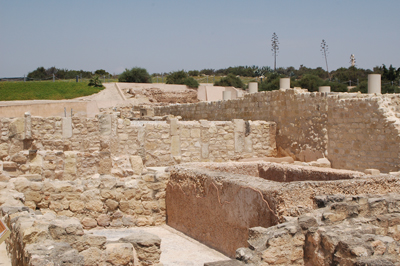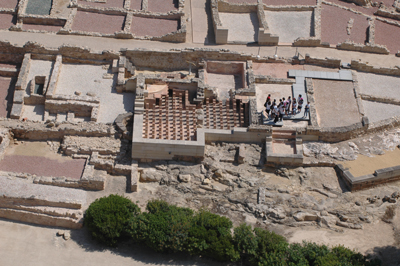Tossal de Manises
TOSSAL DE MANISES

.jpg)
EL TOSSAL DE MANISSES is the site of the Roman city of Lucentum, the ancient Alacant. It can be found at the top of a hill (or tossal) next to the sea, with a height of 38 metres, 3.5 km from the centre of the modern city, in the Albufereta district. To this day, the entire urban area (around 25,000 m2) has been completely preserved, walled in and the perimeter of which is approximately 600 metres; the whole complex was declared a Historic-Artistic Monument in 1961.
The origins of the settlement at this site can be traced back to the end of the 5th century BC or the beginning of the 4th century BC, although we know little about this first phase of occupation. The panorama changed radically in the last third of the 3rd century BC, when a powerful fortification was built that completely enveloped the site, with towers and, in some sections, a fortification wall that changed the layout of the site forever, and which determined the later constructions with the establishment of the perimeter of the Roman city.

This first urban phase was destroyed around 200 BC and as a result, the Tossal underwent a long period of abandonment and decay, which began to change at the end of the 2nd century BC, when a new construction period began in which the entire urban road was rebuilt. During the reign of August, the first Roman emperor, the city took on the rank of municipium (municipality), through which it became autonomously governed with purely Roman magistracies and institutions; this is when the name Lucentum was historically and epigraphically recorded. During the end of the 1st century BC and the whole of the 1st century AD, the city experienced a period of certain splendour, with the construction of the forum, two public baths, a new entrance gate to the enclave, the system of keystones and at least one temple, as well as the extension of the city, which surpassed the original limits established by the walls.

At the end of the 1st century AD, the signs of the city's decline began to become evident, and a period began that would end with the definitive abandonment and disappearance of the city in the 3rd century AD. After a new period of sporadic frequentation in which the site was converted into a quarry of materials, the site was occupied, now as a funerary space, between the 8th and 10th centuries AD, when we witness the creation of a maqbara (cemetery) fully characterised by the introduction of the Islamic funerary ritual.
Visit the 360º view of this site

